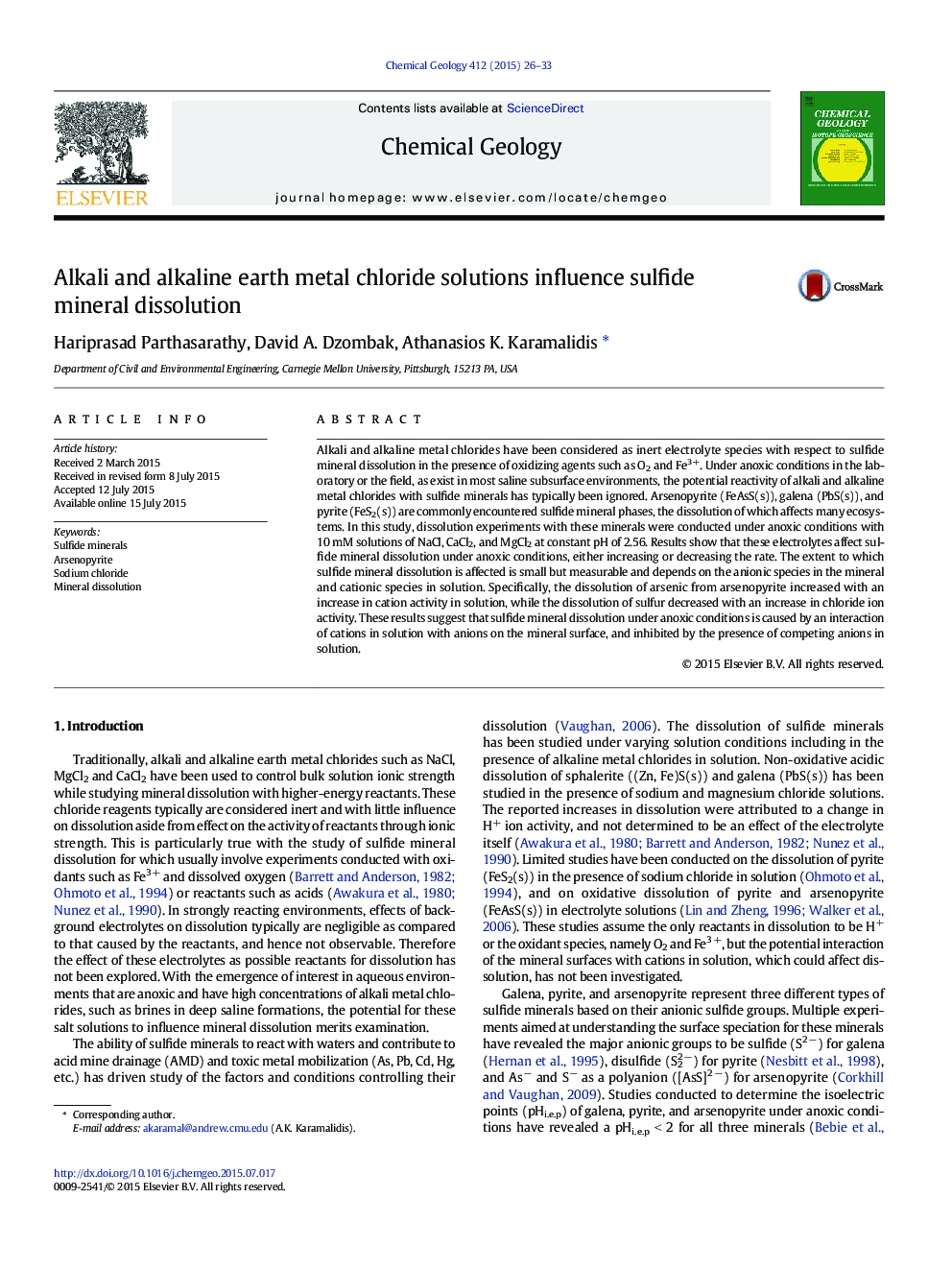| Article ID | Journal | Published Year | Pages | File Type |
|---|---|---|---|---|
| 4698419 | Chemical Geology | 2015 | 8 Pages |
•NaCl, CaCl2, MgCl2 influence sulfide mineral dissolution under anoxic conditions.•Dissolution of arsenic from arsenopyrite increases with an increase in cation activity•Dissolution of sulfur decreases with increasing chloride ion activity in solution•Sulfide mineral dissolution under anoxic conditions depends on: anionic species in mineral; cations,anions in solution.
Alkali and alkaline metal chlorides have been considered as inert electrolyte species with respect to sulfide mineral dissolution in the presence of oxidizing agents such as O2 and Fe3+. Under anoxic conditions in the laboratory or the field, as exist in most saline subsurface environments, the potential reactivity of alkali and alkaline metal chlorides with sulfide minerals has typically been ignored. Arsenopyrite (FeAsS(s)), galena (PbS(s)), and pyrite (FeS2(s)) are commonly encountered sulfide mineral phases, the dissolution of which affects many ecosystems. In this study, dissolution experiments with these minerals were conducted under anoxic conditions with 10 mM solutions of NaCl, CaCl2, and MgCl2 at constant pH of 2.56. Results show that these electrolytes affect sulfide mineral dissolution under anoxic conditions, either increasing or decreasing the rate. The extent to which sulfide mineral dissolution is affected is small but measurable and depends on the anionic species in the mineral and cationic species in solution. Specifically, the dissolution of arsenic from arsenopyrite increased with an increase in cation activity in solution, while the dissolution of sulfur decreased with an increase in chloride ion activity. These results suggest that sulfide mineral dissolution under anoxic conditions is caused by an interaction of cations in solution with anions on the mineral surface, and inhibited by the presence of competing anions in solution.
